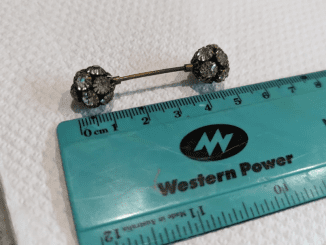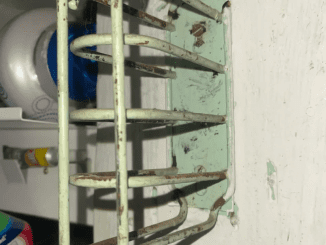Ice cubes are a staple in many beverages, providing that refreshing chill we crave on hot summer days. Whether it’s soda, iced tea, or a cocktail, ice plays a crucial role in enhancing the drink’s experience. But a recent viral video has caused quite a stir, leaving many people swearing off ice cubes altogether after learning the truth behind how they are made.
In this article, we’ll dive into why this viral video has left people so shocked, how ice is typically produced, and the potential health risks involved. Plus, we’ll explore the detailed process of making those perfectly clear ice cubes you often see in high-end bars and restaurants.
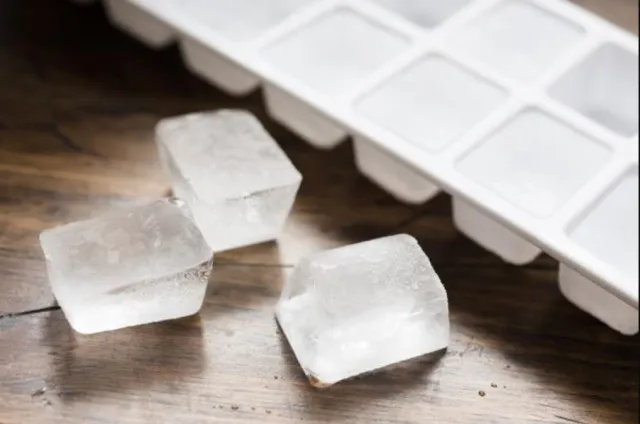
People baffled after learning how ice cubes are actually made. Image Credit: Getty
The Shocking Revelation About Ice Cubes
Recently, a video by a technician known as “Ice Machine 411” went viral across social media platforms. In this video, the technician opens up an ice machine he regularly services and uncovers a startling sight: black mold inside the ice-making compartment. For many viewers, this revelation was enough to make them rethink the next time they reach for an ice cube in their drink.
The ice looked clean at first glance, but upon closer inspection, the technician found mold not just in the ice compartment, but also on the ceiling of the machine. This contamination is deeply concerning because, as the technician explained, it poses several health risks, including autoimmune problems, skin issues, and fatigue.
The Health Risks of Moldy Ice Machines
Mold, particularly black mold, is a serious issue when found in ice machines. Mold thrives in damp, dark environments—exactly the conditions inside an ice maker that isn’t regularly cleaned and maintained. When ice is made in these machines, mold particles can end up contaminating the ice, potentially exposing consumers to harmful health effects.
According to the technician, the mold buildup inside these machines is more common than people realize, particularly in bars and restaurants where ice machines are not always cleaned as often as they should be. Mold exposure can cause allergic reactions, respiratory problems, and in some cases, more severe health issues. Knowing that your ice might be contaminated with mold can turn that cool, refreshing drink into something far less appealing.
Bars and Restaurants: A Hotspot for Poor Ice Hygiene
The viral video also highlighted a key takeaway: bars and restaurants can be the worst offenders when it comes to ice machine hygiene. The technician in the video strongly recommended avoiding ice from places that don’t service their machines regularly, especially bars where high ice consumption means machines are constantly running.
Cleaning an ice machine is no simple task. It requires a thorough process that involves emptying the bin, scrubbing the interior, and using specialized cleaners and sterilizers. Only after the machine is fully sanitized can it be rinsed out and ready for use again. Without regular, proper cleaning, mold and bacteria can build up quickly, leading to contaminated ice.

A viral video by “Ice Machine 411” left viewers uneasy about their drink ice. Image Credit: Ice Machine 411
The Process Behind Clear Ice Cubes
While the viral video focused on the dangers of contaminated ice, many viewers were also surprised to learn how clear ice cubes are made—those perfectly transparent cubes you often see in upscale bars. The process is far more involved than most people realize.
Clear ice is made using a method called directional freezing, a technique that freezes water in one direction, either from the top down or the bottom up. This method pushes out air bubbles and impurities as the water freezes, resulting in ice cubes that are perfectly clear rather than cloudy.
How Directional Freezing Works
Directional freezing starts with purified water. While using filtered or boiled water can reduce the number of impurities, that alone isn’t enough to make crystal-clear ice cubes. The magic happens when you control how the water freezes.

He found black mold, which can cause autoimmune problems, skin issues, and fatigue. Image Credit: Ice Machine 411
In a typical freezer, water freezes from all sides at once. This traps air and impurities inside the ice, giving it that cloudy appearance. But in the directional freezing method, the water is placed in an insulated container designed to freeze from only one direction. This gradual freezing pushes the bubbles and impurities toward the last part of the water to freeze.
As the ice forms, the remaining water, which contains all the trapped air and impurities, is drained or discarded. This leaves the rest of the ice clear and free from imperfections.
Why Clear Ice Is Preferred in High-End Establishments
Clear ice is often the choice for premium bars and restaurants, and it’s not just because it looks good. Clear ice is denser and melts more slowly than regular ice, which means it cools your drink without watering it down too quickly. This is especially important for cocktails where the balance of flavors is key.
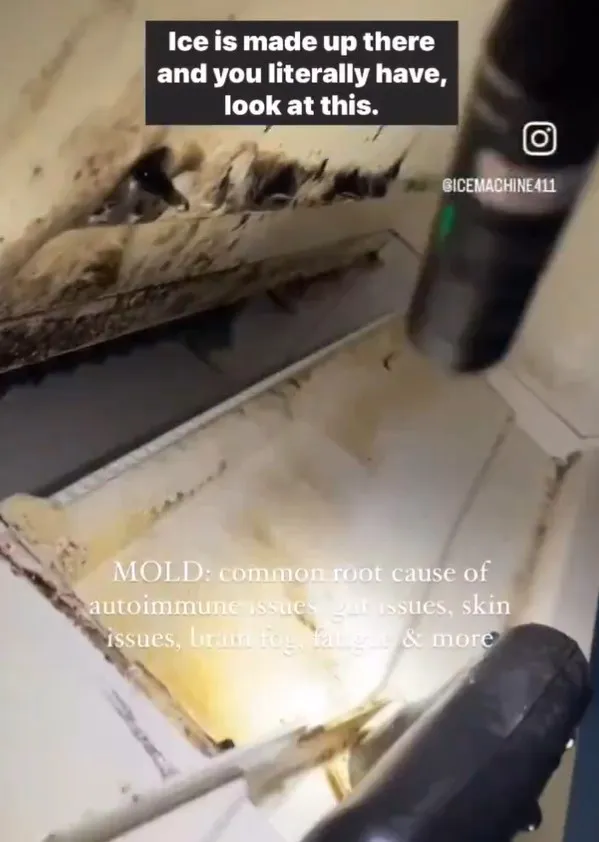
The former technician warned that bars are often the worst places for ice hygiene. Image Credit: Ice Machine 411
Moreover, clear ice is visually appealing. It adds a touch of sophistication to any drink, making it a favorite in the world of mixology. But while clear ice might look beautiful in your glass, the cleanliness of the machine that made it is just as crucial.
The Takeaway: Should You Stop Eating Ice Cubes?
After watching the viral video, many people have been left wondering if they should stop consuming ice altogether, especially from bars and restaurants. The revelation of mold in ice machines is certainly unsettling, and it underscores the importance of regular machine maintenance.
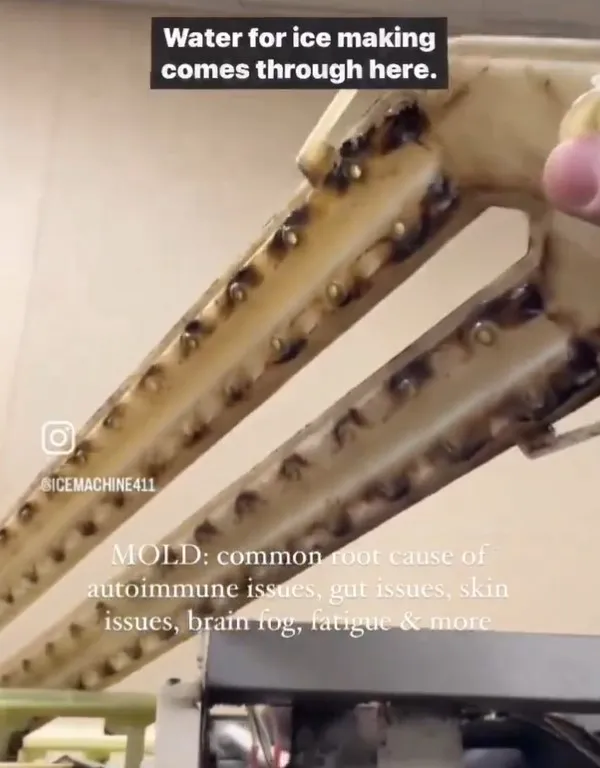
The bad condition of the ice-making machine left people terrified. Image Credit: Ice Machine 411
If you’re concerned about the quality of the ice you consume, here are a few tips:
- At Home: Regularly clean your ice machine or ice trays. Follow the manufacturer’s instructions for cleaning and consider using filtered water to reduce impurities.
- At Restaurants and Bars: If you have doubts about the cleanliness of the establishment, it’s better to avoid ice. Trust your instincts—if something feels off, don’t risk it.
- Consider Alternatives: If you want to enjoy ice at home without the worry, invest in an ice machine that you can clean yourself. Alternatively, purchase clear ice from trusted suppliers who follow strict health and safety standards.
Conclusion: The Icy Truth
Ice cubes might seem harmless, but as the viral video revealed, their production process and cleanliness can raise serious concerns. Whether it’s mold lurking in ice machines or the surprising complexity of making clear ice, this small kitchen staple carries more weight than you might have thought.
To ensure you’re consuming safe ice, pay attention to how your ice is made and, when in doubt, opt for trusted sources or clean your machines regularly. After all, what’s the point of having a refreshing drink if it comes with potential health risks? Stay informed, and make sure your next chilled beverage is as safe as it is satisfying.

